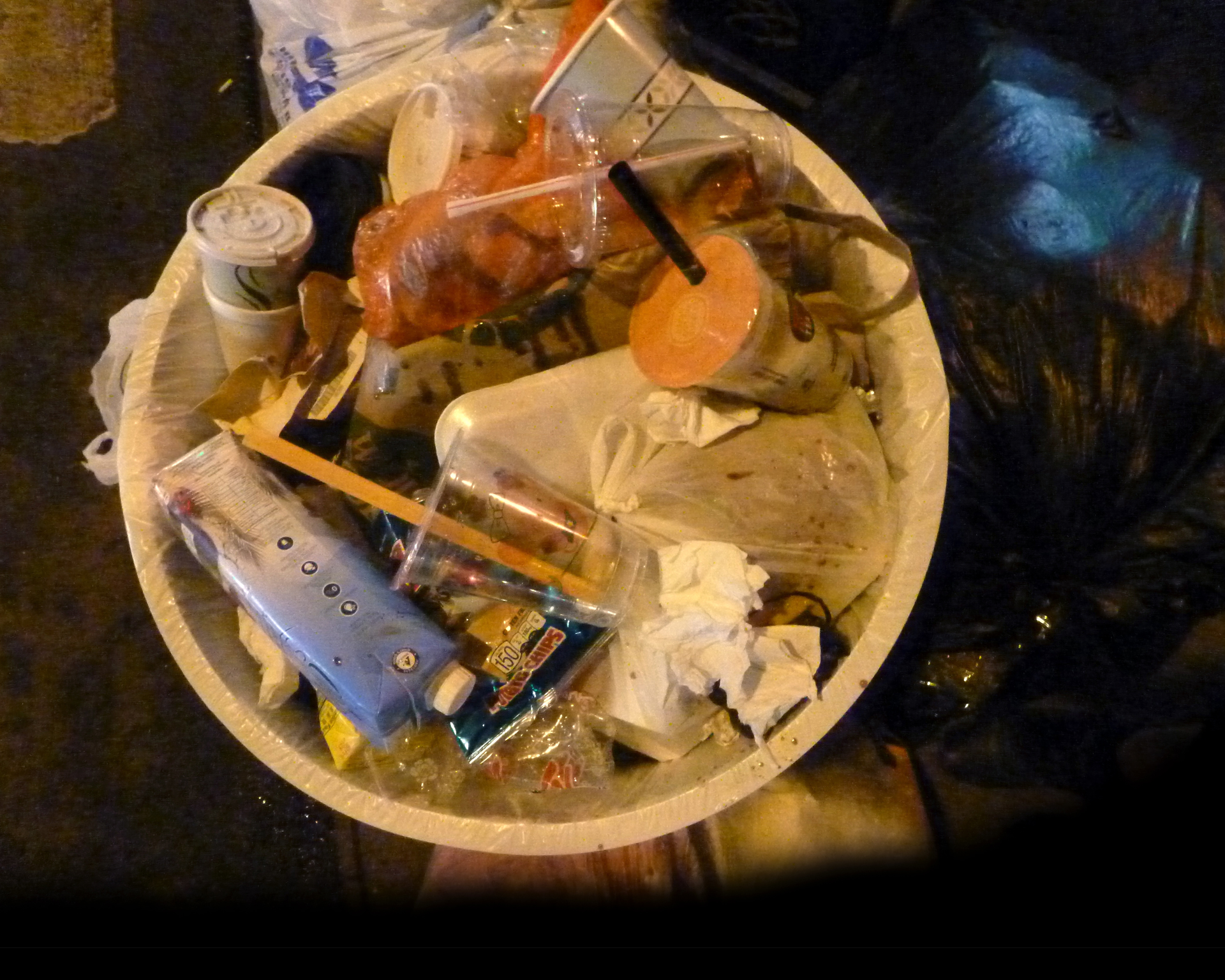
Objects that (Don't) Belong
Vita Coco is a drink container that is not often found in the trashcans of Chinatown, New York City. The bottle here tells us this picture dates after 2003, when Vita Coco was first branded and marketed.1Who brought it to this location?
Objects Tell Stories
This bubble tea is from Kung Fu Tea, a bubble tea franchise that has a location two blocks away from this trash can. It's only half finished.
Things thrown away can tell a lot about the place, people and their values.
Bowery Street and Grand Street
The litter basket, an often ignored until needed item, plays a large part in the story of public trash. This one, on the corner of Bowery and Grand in Chinatown, is one I pass quite often and is also this full quite often.
Bowery and Grand St, 2018. Photograph taken by jaime ding.
A HISTORY OF TRASH IN SIGHT was created by jaime ding and supported by the Bard Graduate Center Digital Media Lab in the Bard Graduate Center at 38 West 86th Street, New York City, New York.
TRASH IN SIGHT is an interactive digital reconstruction of four decades of New York City public trash and their containers, reimagining the history of trash and its importance in systems of value. This visualization comes to life through the digitization of unwanted objects, with the surface of the screen helping create an exploratory “sanitary” boundary between the viewer and trash. Using decade specific sounds and decade-specific images of real objects, including the trash cans (and the fonts used on them) and various things possibly thrown away, the project reimagines the idea of trash. These recreations result from extensive research using historical photographs, movies, archaeological projects, found objects, and municipal archives.
The original idea stemmed from a final project for Professor Catherine Whalen’s Spring 2017 course, The Material Culture of New York City: The Twentieth Century, and fulfills requirements for the degree of Masters of Arts in Decorative Arts, Design History, and Material Culture at the Bard Graduate Center. The initiative to do a digital qualifying project, a new method to share academic knowledge, was inspired by the late Professor David Jaffee.
This website was built on WordPress, 2018.
jaime ding likes trash.
jaime ding is a Masters student at the Bard Graduate Center.
You can find more of her work (about trash) at jaimeding.wordpress.com
or follow her instagram (of trash) at @jaimeist.
Email your thoughts to nyctrashinfo@gmail.com.
Acknowledgements
Thanks first and foremost to my advisor, Dr. Meredith Linn, for her kind enthusiasm and guidance in the making of this project. Equal levels of gratitude go towards to Dr. Jesse Merandy and his steady support on grappling with the screen, and Dr. Catherine Whalen, for sparking this journey. Thanks also to the Bard Graduate Center faculty, staff, and the Founder and Director Dr. Susan Weber.
Deep thanks to all the incredibly helpful people who have offered guidance and resources along the way, including the incredible generosity of Miriam Sicherman and Closet Archaeology, the staff at the NYC Municipal Archives Library, Joshua Rowley at Duke University Archives, Richard Saunders from candywrapperarchive.com, Dr. Robin Nagle, and many more.
Thank you also to my family and my lovely friends, particularly my generous guinea pigs – Gaia Lettere, Neeta Patel, Angela Zhou, Brockett Horne, Emma Cormack, Juliane Ding, and many others – all who have dug through trash with me, digitally, physically, and spiritually.
♬ Robie Lester, “The Litterbug Song.” 1962.